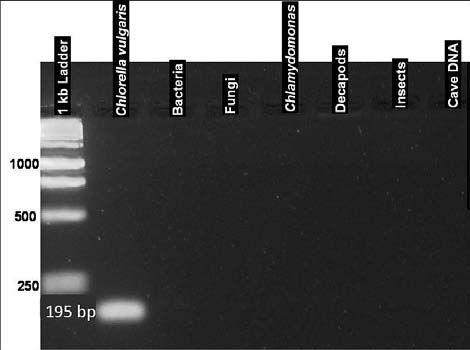Development of a Specific Quantitative Real-Time PCR Assay to Monitor Chlorella DNA: A Case Study from Mammoth Cave National Park, Kentucky, USA
DOI:
https://doi.org/10.3986/ac.v40i2.21Povzetek
Estimates of phytoplankton abundance are important parameters watched by stewards of water quality and freshwater ecology in rivers, streams, and reservoirs. A targeted phytoplankton assay for Chlorella DNA was developed to estimate the abundance of the predominant species of green algae in surface waters of Mammoth Cave National Park (MACA) in Kentucky, USA. The phytoplankton community in the Green River in MACA has been shown to consist of 95% Chlorella sp. (Wullschlegger et al., 2003). Chlorella 18S rRNA gene sequences were amplified and quantified using Quantitative Real-Time PCR (qPCR) with primers specific for the family Chlorellaceae in the class Trebouxiophyceae, order Chlorellales. Concentrations of Chlorella DNA in river water samples were measured by comparison to a standard curve generated by DNA extracted from a live laboratory culture of C. vulgaris. DNA isolated from other sources including bacteria, amoebae, fungi, decapods, insects, cave sediment, and a different green alga, Chlamydomonas, produced no PCR products and thus did not interfere with the detection and quantification of Chlorella DNA. The assay proved quantitative over more than four orders of magnitude with a method detection limit (MDL) of approximately 2.3 x104 cells/L. Presence or absence of Chlorella DNA could be demonstrated at concentrations ten to 100 times lower than the calculated MDL. Chlorella was detected in lampenflora samples from three tourist trails, and Chlorella was absent from sediment samples off tourist trails that were known to contain high concentrations of bacterial DNA. Demonstration of the utility of the technique was illustrated by a case study in Mammoth Cave National Park to determine Chlorella concentrations at various sampling sites of karst surface streams where invasive zebra mussels are a threat to native species.
Prenosi

Prenosi
Objavljeno
Kako citirati
Številka
Rubrike
Licenca
Avtorji jamčijo, da je delo njihova avtorska stvaritev, da v njem niso kršene avtorske pravice tretjih oseb ali kake druge pravice. V primeru zahtevkov tretjih oseb se avtorji zavezujejo, da bodo varovali interese založnika ter da bodo povrnili morebitno škodo.
Podrobneje v rubriki: Prispevki




